Most AR-15 rifles are chambered in 5.56 or .223. What’s the difference between the two rounds, anyhow? They’re supposed to be interchangeable…kinda, sorta, maybe…aren’t they?
The difference is in the round itself: the NATO round is a little bit hotter. The case is the same size, but the powder charge, projectile and also the rifle specifications differ slightly. That means 5.56 rounds produce more pressure in the chamber than .223 Remington rounds. As a result, you want to make sure to check your AR-15 to see which it’s chambered for, as not all AR-15 rifles sold to civilians are the same.
NATO, you see, develops standardized loads so that member nations have specifications for making the ammunition. As a result, a NATO round is a NATO round is a NATO round wherever it’s produced.
The standard loading is NATO SS109 (aka M855) which uses a 62-grain projectile. The powder charge for that round is on the hotter side, which is loaded to chamber pressures around 62,400 psi in a rifle chambered for 5.56mm NATO.
In a rifle chambered for .223 Remington, the 5.56 round produces chamber pressures of upward of 70,000 psi, if going by SAAMI (the Sporting Arms and Ammunition Manufacturers Institute) standards.
https://www.youtube.com/watch?v=j_8i430fxOA
By contrast, .223 Remington ammo tends to produce lower chamber pressures between, 52,000 and 55,000 psi going by SAAMI specs. Thus, powder charge is the main difference between 5.56 vs .223 cartridges.
Therefore, hotter 5.56mm NATO ammo isn’t safe for use in a rifle that’s chambered for .223 Remington. On the other hand .223 is OK in a 5.56 rifle.
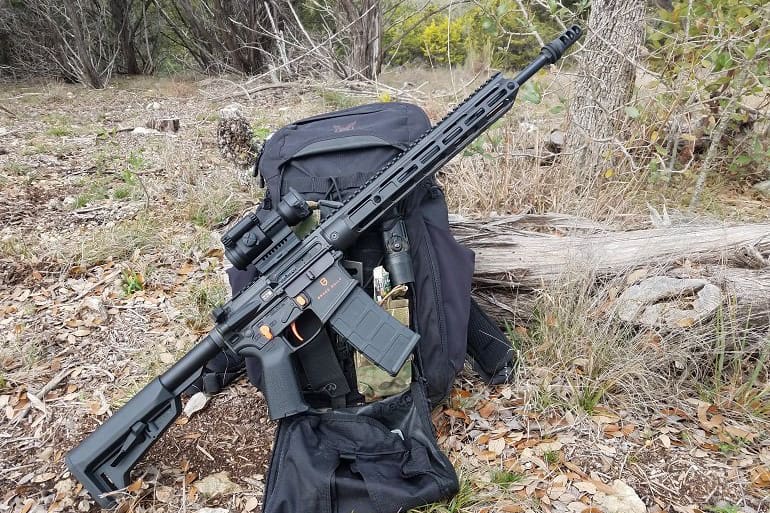
Wait. How can there be that much more chamber pressure when muzzle velocity for a 62gr bullet – according to specs from Federal Ammunition for 5.56mm and .223 – is exactly the same?
NATO specifies that any rifle chambered for 5.56mm have a longer leade than that employed for the .223 Remington round. The leade is the distance between the case mouth and the point at which the rifling begins in the barrel. Some call it the “throat.”
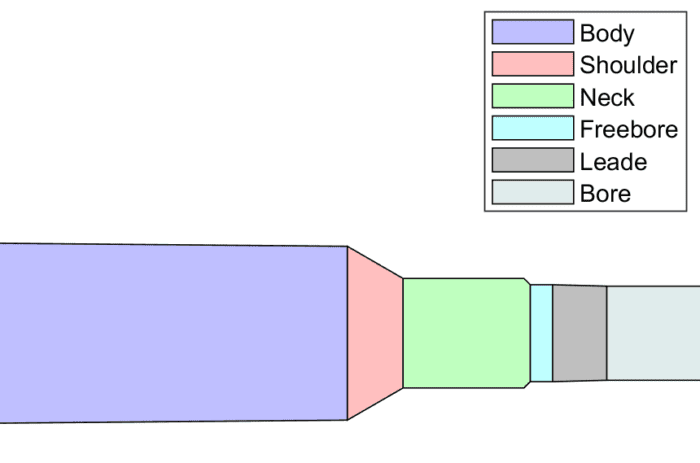
The .223 Remington chamber dimensions create a tighter seal on the projectile, and thus produces more pressure despite firing the same size projectile from the same case, given a slightly hotter powder charge, since more gas escapes with the larger leade.
The length and diameter of the leade — called the “freebore” — is longer and wider for the 5.56mm round, meaning there is a wider, longer free space the bullet travels before it contacts the grooves in the barrel.
In addition to the higher pressure, NATO specs also call for any rifle made for use by NATO forces, including the M16, the M4, and other service rifles like the UK’s L85A2 or France’s FAMAS, have rifling with a 1:7 twist, in other words seven inches for a full 360 degrees of rifling rotation. That’s so the NATO L110 tracer round (which has a longer projectile) can be fired from the same rifle as the standard ball round, as the optimal twist rate for the 62gr 5.56mm round is more like 1:9.
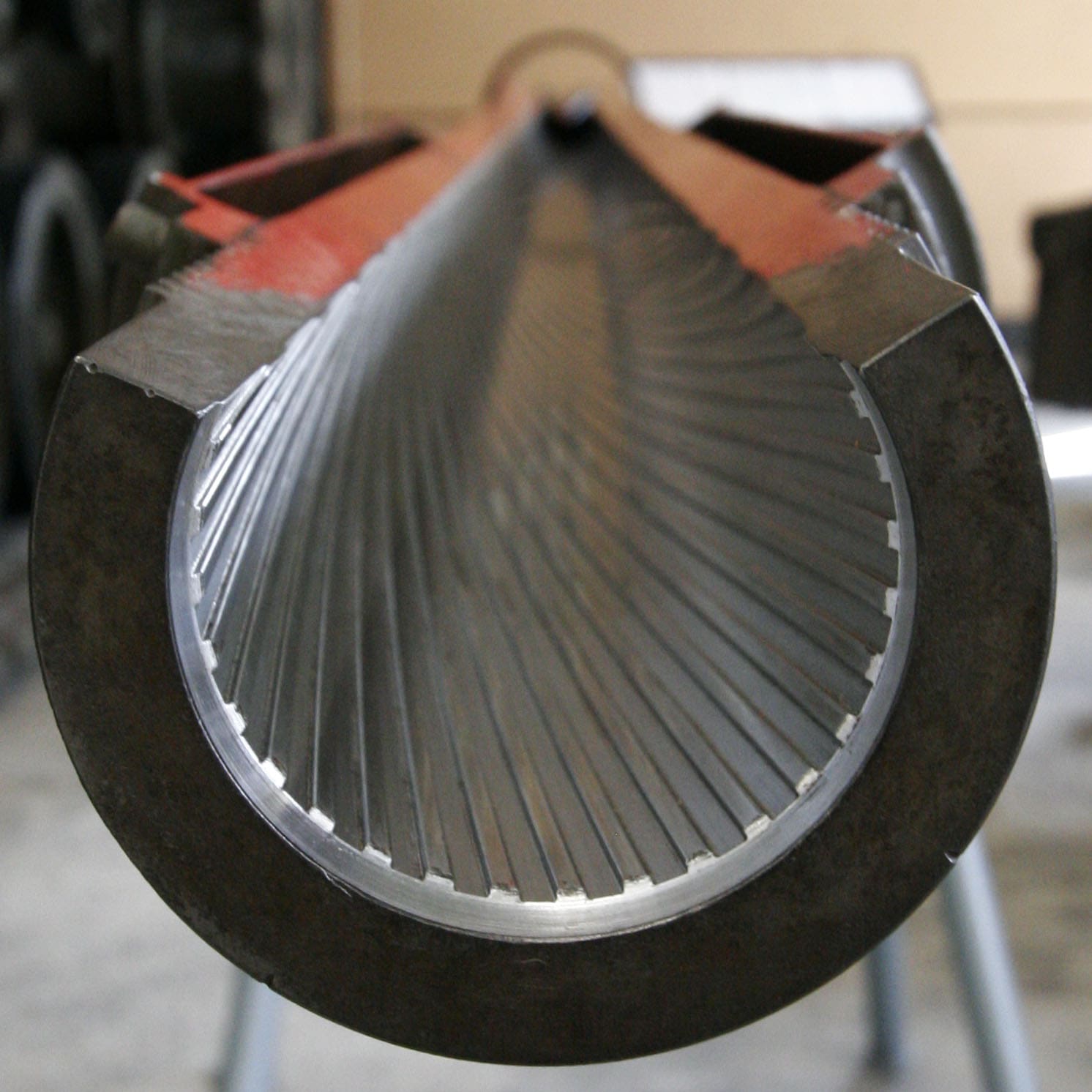
Most civilian AR-15 pattern rifles have a twist rate of 1:9, which is actually something of a compromise. The slower twist rate enables the shooter to use different bullet weights, whereas a NATO-spec gun pretty much uses 62gr ball and 77gr tracer rounds only.
The civilian shooter could conceivably shoot a mix of 40 grain varmint rounds, 50 and 55 grain ball at the range, and even 62 grain ball when they’re feeling squirrely. Lighter bullets benefit from a slower twist rate (1:10 or even 1:12) so a twist rate of 1:8 or 1:9 makes it so you can get decent performance from almost anything.
So…5.56 vs .223. The former uses slightly more powder. Rifles chambered for it must adhere to certain specifications to suit it as it’s a standardized military cartridge. The latter adheres to different specifications (such as a shorter leade), but has a much more diverse array of loadings available from ammunition manufacturers. Case dimensions, however, are the same.
In practical terms it means you won’t get the most out of 5.56 NATO ammo unless your rifle is made to NATO specifications such as the leade, twist rate, and can take the somewhat higher chamber pressures. Thus, with its lower pressures, .223 can be safely used in a NATO-spec rifle in 5.56mm, but not the other way around.
All of that said, we need to talk about .223 Wylde. This isn’t actually a cartridge. Instead, it’s a set of specifications that enable a rifle to use both 5.56 and .233 cartridges interchangeably.
Put more accurately,.223 Wylde is a chambering. It was devised by one Bill Wylde, who came up with a solution allowing for the safe use of both rounds in the same gun while maintaining accuracy. This is accomplished by resizing the chamber for the same length of leade of 5.56mm NATO, but with the freebore diameter of .223 Remington. Either caliber headspaces correctly, preserving accuracy for both.

The question then becomes…which one should you get? A rifle chambered for the NATO cartridge or for .223?
The answer is you should first consider what you want to use it for. A gun — any gun — is ultimately a tool, so therefore consider your task.
The .223 Remington chambering is the better all ’rounder. You can do a bunch of shooting at the range and in competition. You can load it a bit heavier for hunting predators or varminting and since most .223 rifles have that slower twist rate, shorter leade and tighter freebore, the .223 will likely be more accurate.
That means it will be more precise at longer ranges, though there are better rifle chamberings purely for long-range target work and varminting (.22-250 and .243 Winchester come to mind). There’s also a better selection of ammunition available for hunting other game — if you live in a jurisdiction that allows it — and for self-defense.
Rifles chambered for 5.56mm NATO have fewer loadings commercially available and it also tends to be slightly more expensive…but you get to say “mine uses military-spec ammo” if that’s important to you. In terms of real-world capabilities of the round, that probably isn’t worth…well, basically anything. Is that worth much to you?
Let us know in the comments what YOU think about all of that.

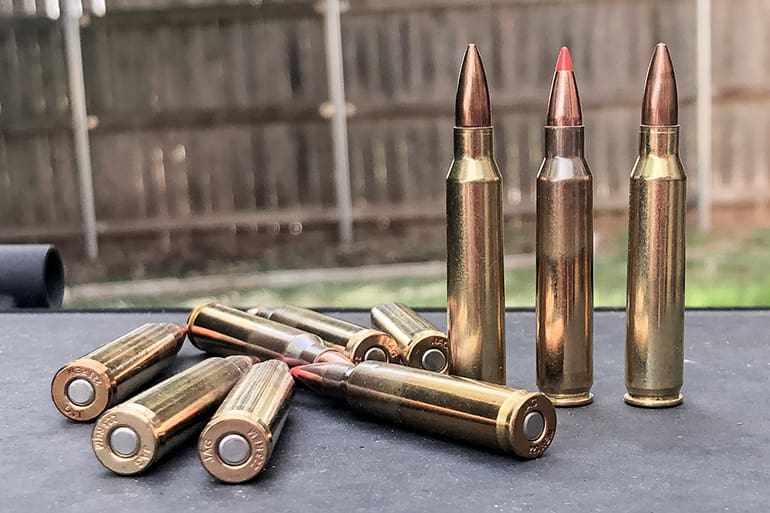
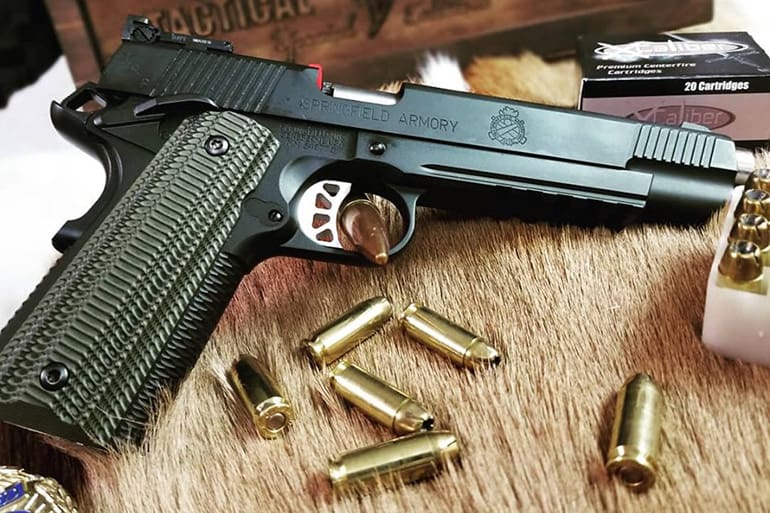
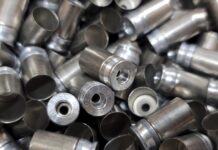

My AR will shoot both. A lot of bolt 223 rifles won’t…
The Mossberg MVP Patrol bolt action will fire both. I have one; it’s a slick little varmint rifle. Takes AR mags.
Back in the ’80s no one talked about this. So. I just shot .556 NATO/.223 Remington in whatever. So did everyone else. Still do. Never had, or heard of, anyone having a problem. If anyone has, I’d like to hear about it.
I’m with you, except 20 years off that. I grew up in the 2000’s (old enough to pay attention to such things), and I have never once heard of anyone having an issue with this.
Agree, it’s really a theoretical thing that people ignored for *decades* before somebody decided to write an article about it. Same as bullet setback, directly chambering a round instead of letting it come from the magazine, and dropping a pistol slide on an empty chamber. People just have to look for things to worry about.
At least in this case there is an actual difference to point to, so it’s good info. If nothing else it gives an excuse for not being able to wring accuracy out of an AR. “Loose chamber, sorry. Nothing I can do.”
Agreed. A non-issue for almost any rifle made in the last 40 years.
On ‘Wylde’ –
“The length and diameter of the leade — called the “freebore” — is longer and wider for the 5.56mm round, meaning there is a wider, longer free space the bullet travels before it contacts the grooves in the barrel.”
Does that mean a .223 barrel can be converted into ‘Wylde’, but not one chambered in 5.56?
A Wilde chamber is generally tighter than 5.56, but has enough leade to safely fire longer heavier 77 grain bullets or 5.56. The goal was increased accuracy but the ability to shoot heavy bullets or 5.56 NATO vs a looser 5.56 military chamber and leade.
You could run either chamber reamer into a .223 barrel. The barrel is the same, only the chamber is different (maybe).
“A Wilde chamber is generally tighter than 5.56…”
Ok, you can make a smaller hole larger, but not a larger hole smaller, so that means a 5.56 chamber cannot be reamed to be a Wylde, correct?
(Or did I pick a bad day to quit main-lining Heroin?)
Back in the 90s I ran commercial .223 and M193 5.56 in my SP1. No problems aside from an 8″ difference in impact at 200m. People with A2 HBARs would regularly run 55 and 62g 5.56 through those guns with a 1in7″ pitch.
In my No4 .223 conversions I used Norinco .223 yellow box, Winchester 223 white box, ADI F1 5.56 62g, and hand loads with 55, 62, and 69g projectiles. Barrel pitch is 1in9″.
I’m currently also using 55g hand load in the Ruger Scout which has a 1in7″ pitch. Load shoots fine out to 400m.
if it chambers, I’ll shoot it.
I had a Thompson Center Encore rifle that would keyhole 62 grain green tip.
Sounds like an issue of twist rate to me…
1:12 From what I’ve read it’s more about the boat tail design of the bullet than it is the weight.
Short barrel and shallow pitch equals keyhole.
Should have been at least a 1in10 or even a 1in9 pitch rifling pitch.
Well, it turns out that the way that SAAMI and NATO test pressure is different. If you test pressure of a .223REM round and a 5.56 NATO round the same way …. Funny enough, they are basically the same.
PS we didn’t worry about what was issued us in the Army in the 80’s and 90’s, either. We just shot it.
I was going to add your comment… glad I kept reading so I didn’t duplicate it. The pressure is measured at different locations on the cartridge between the NATO and SAMMI standards so you are not comparing apples to apples… you’re comparing apples to oranges,
Ditto.
Airports Forced To Hire Extra Security To Guard Thousands Of Stranded Bags From Sam Brinton
https://babylonbee.com/news/airports-forced-to-hire-extra-security-to-guard-thousands-of-stranded-bags-from-sam-brinton
Thanks 40oz
More hard-hitting journalism from the Babylon Bee…
“Personnel seeing any bald person who vaguely resembles Matt Damon in lipstick should report to their manager immediately, as well as engage the suspect with de-escalating measures, including offering to exchange the stolen bag with an alternative bag of comparable value and stylishness.”
One of my favorite satirical sites.
They cemented their reputation with me when they ran three Biden pieces in a short time. I only remember two now.
Biden to publish first podcast on a 45 rpm single.
Biden rush to implement vote by telegram.
A theoretical difference at best.
“A theoretical difference at best.”
For me, most likely. I’m in no way a skilled precision shooter.
It probably matters to those that shoot sub-MOA groups…
Only you Capitolvania hilljacks would be fooled by anything that the DOD or sammi tell you. Ihave loaded 223 Nato rounds backwards in a sporting chamber with the only noticable difference between the two is that the heavier nato bullets seemed too remove more brain matter when they exit the skull… hell, it dont even slow down much
What’s the Difference Between
Real dacian and Fake (no stupid-face cartoon) dacian? Are They Interchangeable? Does It Matter?
….. apparently NOT
Nah, the fake one writes coherently, so that one is the real, brain-damaged deal…
U.S. Cartridge Co. makes ammo for the U.S. Military, called “green tip” and everyone buys it or used to buy it because it was cheaper and no one I know had any problem firing it in .223 caliber rifles. Yes its hot and probably should not be fired in a .223 but people because of ignorance and or cheapness do it anyway.
From Gun Jesus:
https://www.youtube.com/watch?v=-fmcdaAOkY4&t=16s
…. okay Geoff, I see what you mean. Nevermind
dacian the demented dips***,
It will probably fracture your already diseased brain, but quickly research NATO vs. SAAMI testing standards for chamber pressure.
Or would actual knowledge of real facts cause a gravitic inversion, and turn the universe inside out?
Tell us, once again, about your EXTENSIVE firearm knowledge, you stupid @$$clown.
You are too stupid to insult . . . hell, you’re too stupid to even MOCK!!!!
We all know Dacian has a massive cranial-rectal inversion.
“The case is the same size,”
The 5.56 NATO case holds .3gr of water less than the .223 Remington case. An equal charge stuffed into less space will yield a higher pressure.
weird. i though the 5.56 brass was thinner…
Nope, the higher chamber pressures means a thicker case is required.
And Jon, is that .3gr grains or grams?
Grains, and yup, you’ve got it. ID and OD are not equal between both cartridges.
It really depends on who makes the cases. I saw an article a number of years ago where they weighed a good number of 5.56 and .223 cases from US and foreign manufacturers and there was really no clear trend in case weight between the two. I think the heaviest case measured was a .223. I can’t remember for sure if they compared volume, but I’m pretty sure they did. It would have followed a similar trend, no clear cut difference.
With .308 vs 7.62 NATO the NATO cases are usually noticeably heavier though.
I found what I was looking for in regards to .223 vs 5.56 brass. It’s a good read https://www.6mmbr.com/223rem.html
They’re usually the same price for cheap FMJ. I choose 5.56 NATO for FMJ because it has higher velocity. Recall that Rittenhouse used FMJ ammo for defense. It seemed to do the trick. Yes, I have soft points, but I have a lot more of the cheap stuff.
My ARs are in Grendel and 308. Nothing else matters.
.243 Itll kill a Blue whale, if you dont believe me just try finding one in the Flint Hills.
.gov was one whale to late.
BTW I shootz .223 & 5.56×45 in the mini14 I have, no problems.
“.243 Itll kill a Blue whale,”
What about the gay Blue Whales? 😉
(I always shot 5.56 in the .223 mini-14 ranch I had years back…)
I just looked it up on the Ruger website. All CURRENT Mini-14 rifles are rated for 5.56 NATO. Mine is a Mini-14 Tactical.
“All CURRENT Mini-14 rifles are rated for 5.56 NATO.”
OK, my 1970s vintage Ranch Rifle was marked .223.
It likely makes sense for Ruger to only sell rifles that can handle the higher chamber pressures, legal liability-wise.
And, if someone *really* wanted a Mini-14 with a .223 chamber, an aftermarket barrel is probably available…
I have an early 80s Mini14 also marked 223Rem. I believe they did that due to sales in countries that prohibited civilian ownership of ” military calibers “
“I believe they did that due to sales in countries that prohibited civilian ownership of ” military calibers “”
That makes sense… 🙂
I always fired 5.56 OR .223 commercial OR military, as well as a mix-master bunch of reloads in my 1970’s mini-14’s (I had like 5 of them at one time before I wised up and invested in AR15’s)… Mostly I fired whatever was available in my “price-range”.. Remember the old Ten-X ammo that was available in bulk at any gun show back in the day?
There is a simple solution for anyone who has an issue with 5.56 vs .223. Shoot what the receiver/barrel is marked for. Very few rifles manufactured in the past century aren’t marked for the cartridge they use.
I’ve burned up a lot of both 5.56 surplus ammo and several loadings of .223 in my now ancient Colt AR15A2. Never had an issue and the chamber shows no signs of undo wear or over pressure damage. Just my take on this. Someone needed something to write about and found this non controversy/non issue to make something out of.
Yes, 5.56 is hot .223.
However, how many people have died from using 5.56 in a .223 gun? Zero, as far as i know off.
First of all, every gun must be able to handle 30% overpressured proof rounds. And on top of that, no gun manufacturer wants the liability of their .223 guns blowing up constantly, so every .223 barrel/chamber can handle 5.56 pressure.
As for which one to get, 223wylde with an 1/8 twist is the best overall choice in most cases, unless you want to go extreme in either direction, at which point you probably know best what you are doing and what you want.
And buy 5.56 ammo if you can, not because Nato matters to you, but those sweet extra ft/s of muzzle velocity do matter for fragmentation or expansion of bullets.
Reading the “Chambering” of an AR style firearm is often a two part Spec Check. There is normally a caliber identified with the Receiver markings though some may just refer to Cal as “Multi”. The actual “chambering” is marked on the barrel and can be viewed after the handguards are removed. Even Colt in its hayday marked receivers .223 or .223 Rem and marked/spec’d them that way while the barrels were actually stamped and chambered to 5.56 NATO. Reasons included mil contract leftovers/changes and outsourcing (like from Bushmaster). Colt isn’t the only mfg to screw this up but it is a company you wouldn’t expect to. “YOUR” chamber spec is on the barrel. PERIOD!
The author failed to mention that one of the reasons for the differing chamber pressures between the two cartridges is how and where in the chamber the pressure is measured. SAAMI measures pressure at the middle of the cartridge. NATO/Military measure pressure at the case mouth. Lucky Gunner did quite a bit of testing, and when they measured pressure using the SAAMI method between 5.56 and .223, the pressure increase was only slightly hotter with 5.56. the LG article goes on to ask several manufacturers about the pressure difference, and none were concerned because the pressures weren’t as extreme as the pressures quoted in this article.
SAAMI’s Test Barrels are also chambered to the tightest specifications for any given cartridge (as tight as it can get and still load the cartridge). The vast majority of barrels manufactured, are reamed looser than SAAMI’s test barrels for more consistent feeding of the cartridge, plus as the barrel heats up, chamber dimensions change with expansion and contraction. the LG article also found slight chamber differences etween barrels made by the same manufacturer. LG’s overall conclusion was that there is a difference in pressure measurement, but unless it was a “tight” barrel, one shouldn’t see any pressure problems develop. If you do see popped primers (usually the first sign of pressure issues), then cease fire and reevaluate.
https://www.luckygunner.com/labs/5-56-vs-223/
About 30 years ago my former wife took one of my mini-14s go a tactical training class. The instructor Ken Hackathorn was very critical of the Mini-14s for reliability. Before the day was over the bolt face of my Mini shattered. Wondering now if she was using 5.56 instead of .223 ammo.
Comments are closed.